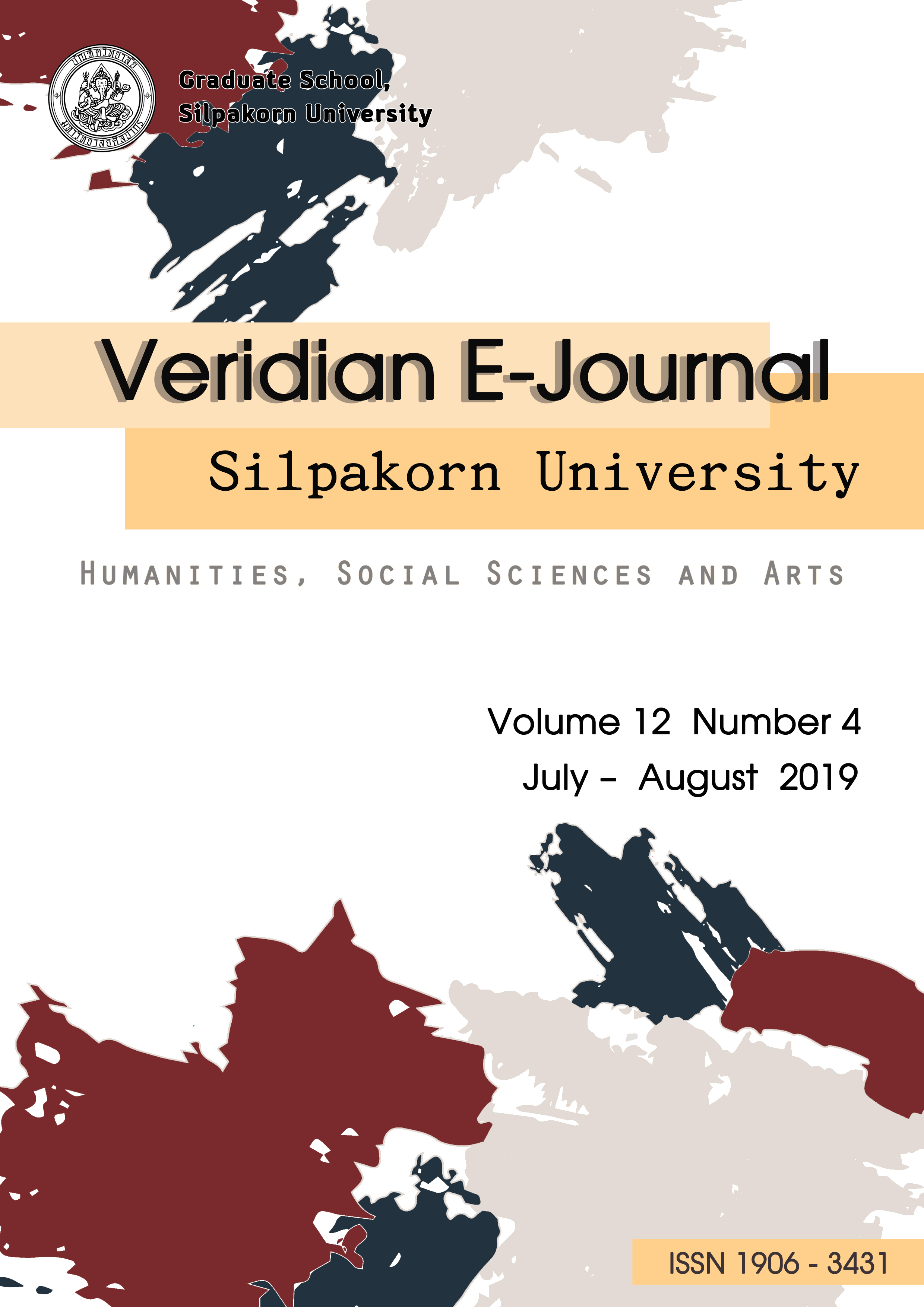ความสัมพันธ์ระหว่างภาพถ่ายและงานถ่ายภาพยนตร์ของสแตนลีย์ คูบริก (The Relationship Between Photography and Filmography of Stanley Kubrick)
Main Article Content
Abstract
ในฐานะบทบาทผู้กำกับภาพยนตร์ที่มีความเป็นศิลปินและมีเอกลักษณ์เฉพาะตัวอันโดดเด่นของสแตนลีย์ คูบริก บทความชิ้นนี้จึงมุ่งเน้นไปที่การศึกษาผลงานภาพถ่ายในช่วงก่อนการทำภาพยนตร์ของผู้กำกับท่านนี้ทำงานเป็นช่างภาพให้กับนิตยสารลุค (Look) เพื่อหาความสัมพันธ์ที่เป็นเอกลักษณ์เฉพาะตัวที่เชื่อมโยงมาถึงงานด้านภาพยนตร์ ทั้งในด้านเทคนิควิธีการและรูปแบบแนวคิดที่นำมาปรับใช้ในการสร้างสรรค์ผลงานภาพยนตร์ โดยใช้หลักขององค์ประกอบศิลป์ในการเปรียบเทียบและหาความเชื่อมโยง เพื่อนำมาวิเคราะห์ถึงแนวคิดและวิธีการนำมาปรับใช้เพื่อสร้างความหมายในการสร้างสรรค์อันเป็นเอกลักษณ์ที่โดดเด่นของสแตนลีย์ คูบริกในการสร้างภาพยนตร์
จากการศึกษาพบว่าผลงานภาพถ่ายและผลงานภาพยนตร์ของสแตนลีย์ คูบริก มีความสัมพันธ์กันในเชิงของรูปแบบและวิธีคิดในการสร้างสรรค์ ทั้งในเรื่องของการใช้เส้นนำสายตา การจัดองค์ประกอบโดยการใช้การซ้ำกันจนเกิดจังหวะที่เป็นระเบียบและการใช้มุมกล้องเพื่อสื่อความหมาย ถึงแม้ว่าผลงานภาพถ่ายจะเป็นภาพถ่ายในเชิงสารคดี แต่กลับพบว่าคูบริกมีความตั้งใจและพิถีพิถันในการสร้างสรรค์ ทั้งในเรื่องของการจัดฉาก การจัดแสงและการสร้างมุมกล้อง สิ่งเหล่านี้เองที่เป็นชนวนนำให้สแตนลีย์ คูบริกก้าวไปสู่การเป็นผู้กำกับที่ยอดเยี่ยมได้ในกาลต่อมา
This study is about Stanley Kubrick’s artistic and unique characters as a film director. The study mainly focuses on his work in photography with Look magazine prior to his career as a film director, in order to find a unique relationship that is linked to filmmaking in terms of technique, methods and conceptual models that are used to create movie.
This study employs the principles of art elements to compare and find the links between the two disciplines in order to analyze the concepts and methods used in Stanley’s unique style of filmmaking. The key findings of this study found that Stanley Kubrick’s photographic work and filmography were relate in terms of style and creativity. This includes the using of the line of sight, repetitive composition to create a systematic rhythm, and camera angles to convey meaning. Although his photographic work is a documentary photography, but the study found that Kubrick was dedicated and meticulous in his creation from setting the scene to lighting, as well as camera angles. These factors have contributed to the success of Stanley Kubrick who later went on to become a great director.

